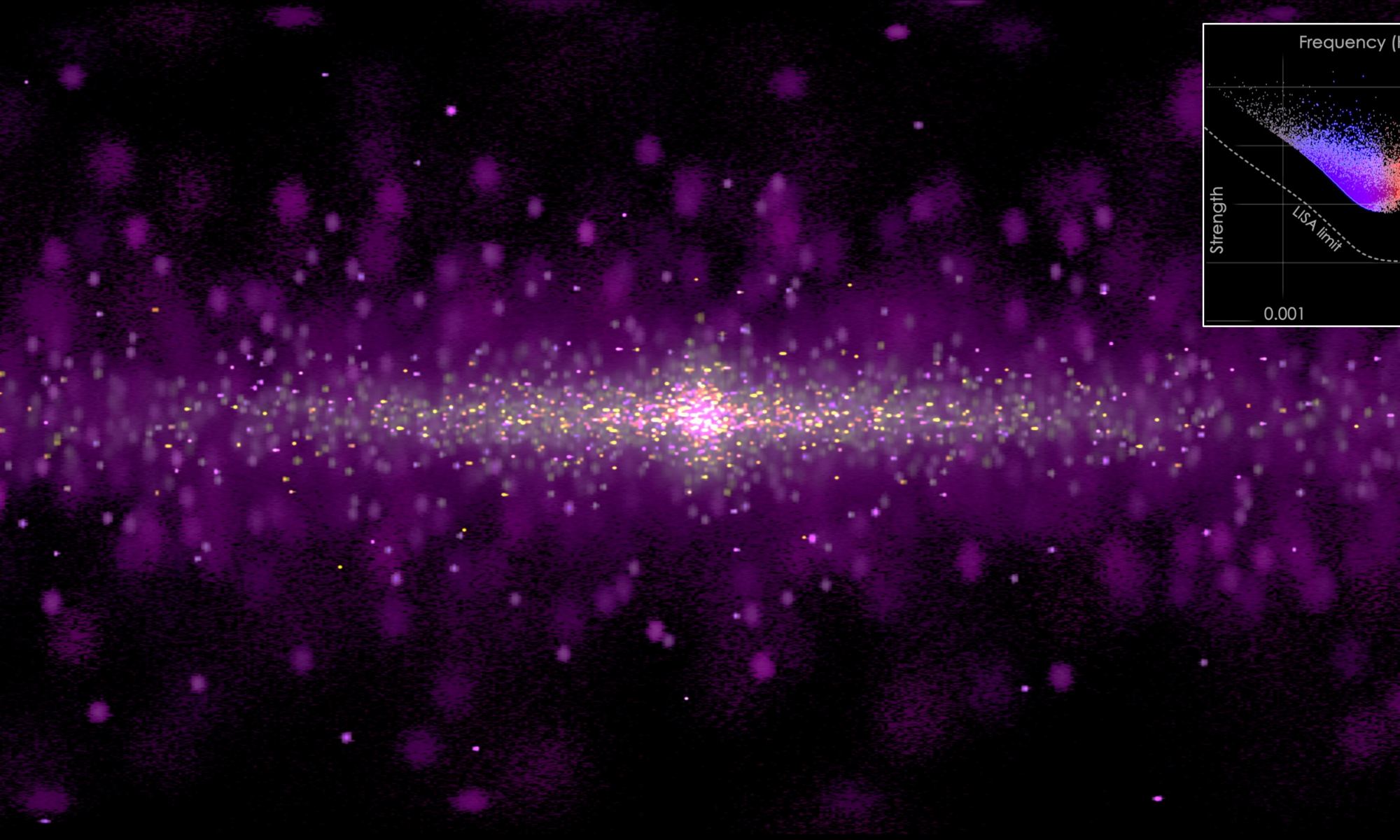Imagine if you could see gravitational waves.
Of course, humans are too small to sense all but the strongest gravitational waves, so imagine you were a great creature of deep space, with tendrils that could extend a million kilometers. As gravitational waves rippled across your vast body, you would sense them squeezing and tugging ever so slightly upon you. And your brilliant mind could use these sensations to create an image in your mind. The ripples of distant supernovae, merging black holes, the undercurrent of the gravitational background. Creation, and destruction, all seen in your mind’s eye.
Perhaps there is such a creature in the vastness of space, but we humans must rely upon our intelligence and engineering. And we may achieve such a vision of the cosmos through a gravitational wave observatory such as the Laser Interferometer Space Antenna, or LISA.
Similar to LIGO, LISA will detect gravitational waves by bouncing laser light along extended arms, measuring the minuscule variations in arms length. But while LIGO has arms just 4 kilometers long, LISA could have arms millions of kilometers long. Where LIGO can detect powerful transient bursts of gravitational waves with frequencies under a kilohertz, such as the mergers of black holes, LISA will detect millihertz waves and will be able to detect not just black hole mergers, but the gradual inspiraling of supermassive black holes and possibly even the remnant gravitational waves of the big bang.

With all this data, astronomers will be able to create a picture of the gravitational wave sky, just as radio astronomers can create images from radio light. If you wonder what the gravitational sky might look like, we now have an idea thanks to a recent study.
The team looked at various known gravitational wave sources such as binary white dwarf, neutron stars, and merging black holes, and calculated the frequencies and magnitudes of their gravitational waves. They then filtered these sources through the estimated limits of what LISA and a second proposed telescope the Advanced MilliHertz Gravitational-wave Observatory (AMIGO) should detect. From this, they assigned colors to various frequency ranges to create a false-color image of the sky. You can see this image above.
We’re still a decade or more away from the launch of LISA, so it will be a while before we can see the real image of the gravitational sky. But that image is out there right now. It ripples through all of us and has every day of our lives. If we’re patient and clever, it’s only a matter of time until we finally see those waves upon our cosmic shore.
Reference: Szekerczes, Kaitlyn, et al. “Imaging the Milky Way with Millihertz Gravitational Waves.” The Astronomical Journal 166.1 (2023): 17.

